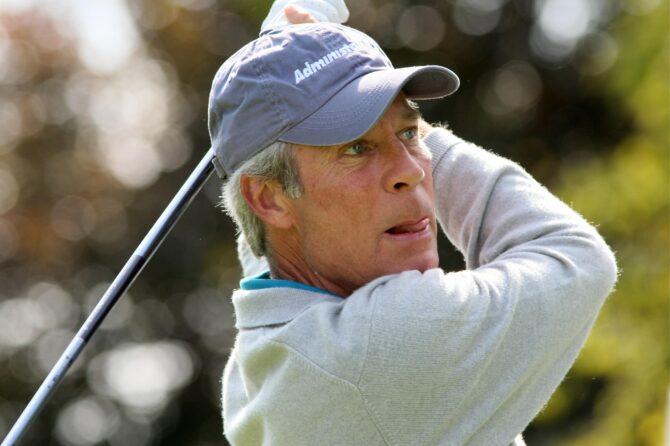1. Johnny Miller’s Holistic Approach to Golf Instruction
****
emphasizes the interconnectedness of the physical, mental, and emotional aspects of the game. He believes that by addressing all three areas, golfers can not only improve their physical performance but also gain a deeper understanding and appreciation of the sport.
Miller’s approach is based on a combination of traditional and modern methods. He draws on the wisdom of classic golf instructors like Ben Hogan and Sam Snead, while incorporating insights from sports psychology and neuroscience. By blending these disciplines, Miller creates a comprehensive system that addresses all aspects of golf performance.
One of the key elements of Miller’s approach is his emphasis on visualization. He encourages golfers to create vivid mental images of themselves executing shots perfectly. By visualizing successful outcomes, golfers can build confidence and develop a strong mental foundation for their game. Miller also emphasizes the importance of developing a positive attitude and a relentless pursuit of improvement. He believes that a winning mindset is essential for overcoming challenges and achieving peak performance.
2. Analyzing Swing Mechanics for Optimal Performance
Understanding the Kinematic Sequence
Johnny Miller’s approach to swing analysis emphasizes the importance of understanding the proper kinematic sequence of the golf swing. This sequence involves the coordinated movement of body segments, including the arms, legs, and torso, in a specific order to generate optimal clubhead speed and accuracy. By breaking down the swing into its individual phases – from the takeaway to the follow-through – Miller helps golfers identify areas where their mechanics may be breaking down and hindering their performance.
Identifying Factors Influencing Swing Efficiency
Miller’s analysis focuses on evaluating various factors that can impact swing efficiency and consistency. He examines the golfer’s grip, posture, alignment, and swing path to determine their potential impact on the ball and the overall quality of the shot. By pinpointing these fundamental elements, Miller provides tailored recommendations to address individual swing weaknesses and enhance areas of strength. For instance, he may suggest adjustments to grip position to promote a more stable and secure hand action, improving clubface control and reducing shot dispersion.
Optimizing Energy Transfer and Power Generation
A key aspect of Miller’s swing analysis is the assessment of energy transfer and power generation throughout the swing. Through the use of swing visualization and slow-motion video, he helps golfers visualize the proper sequence of body movements to maximize clubhead speed and distance. By identifying areas where energy may be lost due to improper sequencing, Miller provides drills and exercises to improve energy transfer and enhance overall power production, ultimately leading to longer and more controlled drives and approach shots.
3. Developing Mental Strategies for Course Management
****
To enhance performance and refinement in golf, Johnny Miller emphasizes the cultivation of mental strategies for effective course management.
Effective course management begins with analyzing the course layout. This includes assessing hazards, distances, and strategic shot options. Developing a game plan that anticipates potential obstacles and capitalizes on advantageous shots will significantly improve shot selection and decision-making.
Furthermore, cultivating mental calmness and focus is crucial. Under pressure, golfers often succumb to distractions or negative thoughts. Miller stresses the importance of staying present, maintaining a positive attitude, and executing shots with confidence. By employing relaxation techniques, visualization exercises, and positive self-talk, golfers can enhance their emotional resilience and make better decisions under stress.
4. Refining the Short Game for Precision and Control
****
Mastering the short game is essential for enhancing precision and control on the greens. Johnny Miller’s approach to golf instruction emphasizes the importance of fundamental techniques and meticulous practice. By honing these skills, golfers can gain consistent accuracy within a variety of short-range scenarios.
Proper technique is paramount for effective short game execution. Grip, posture, and swing mechanics must be tailored to the golfer’s individual physical attributes and feel. Miller’s instruction emphasizes a strong grip, a balanced stance, and a controlled tempo that ensures consistency throughout the swing. Proper weight distribution and head position also play critical roles in maintaining control and promoting accuracy.
Practice is the cornerstone of enhancing short game performance. Miller encourages golfers to dedicate significant time to practicing specific shots from a variety of distances and scenarios. This includes pitching, chipping, and putting with varying lie conditions. Through repetition and analysis, golfers can refine their technique, develop feel, and build confidence in executing precise shots from any situation.
In conclusion, Johnny Miller’s approach to golf instruction emphasizes the interconnectedness of physical and mental aspects. By integrating technical expertise with psychological strategies, he empowers golfers to optimize their performance and enhance their game. Miller’s focus on understanding the root causes of errors, employing drills to improve mechanics, and cultivating a positive mindset fosters a holistic approach to skill acquisition. Through his comprehensive and player-centric methodology, Miller has made an indelible mark on the field of golf instruction, leaving a legacy of excellence and continued refinement in the pursuit of golfing mastery.



